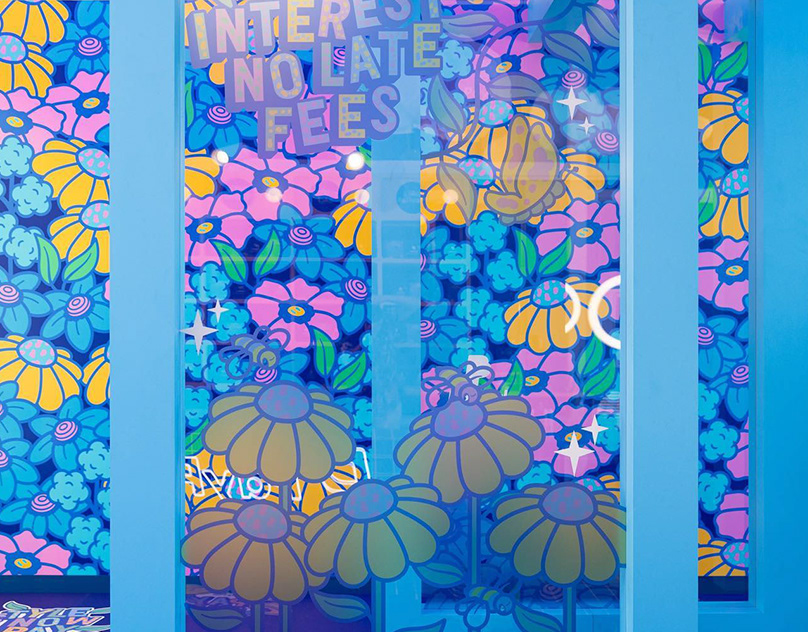Improving Organo's Employee Experience
Part 1 of 6 - Overview & The Customer Journey
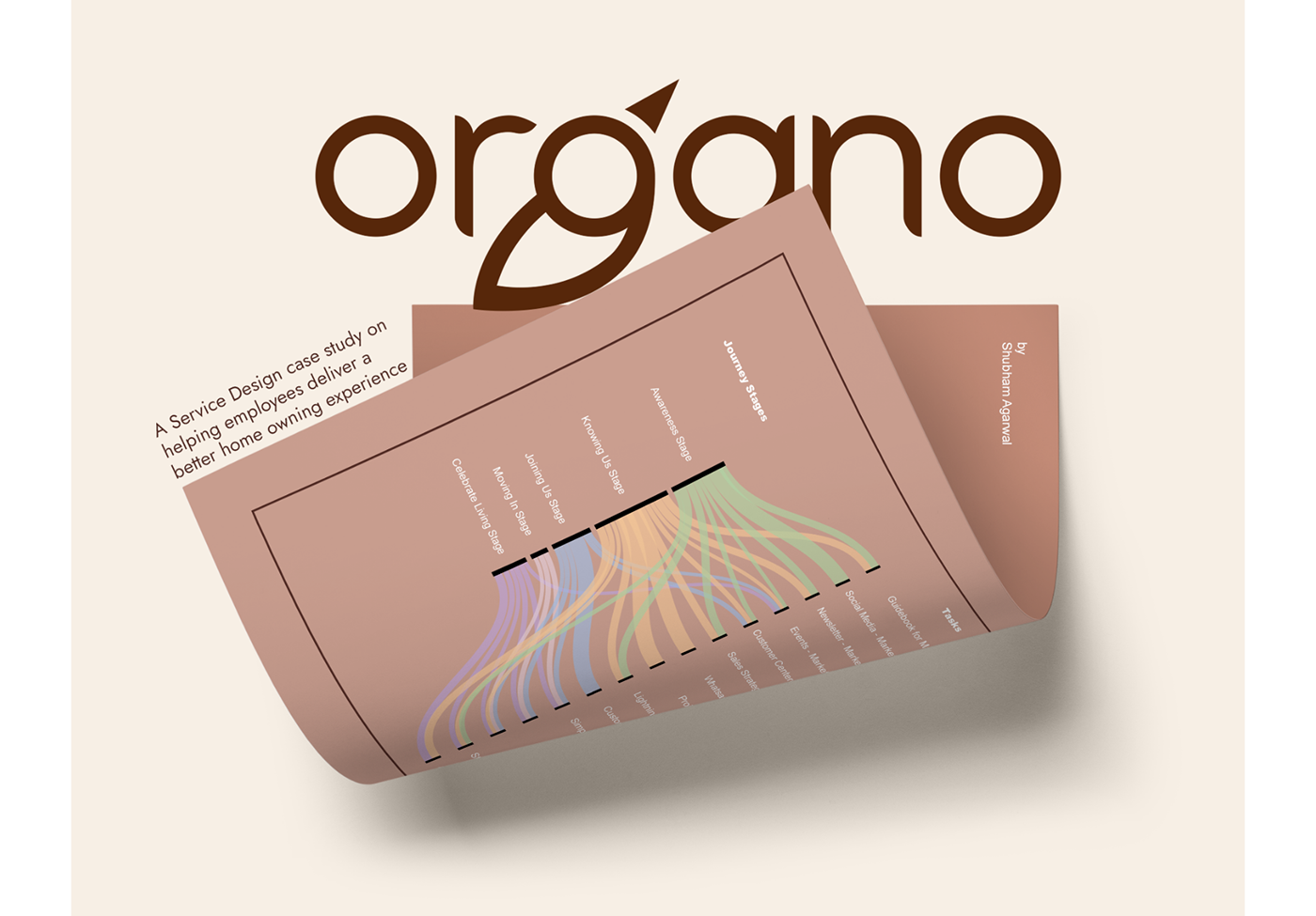
Company
Organo is an alternate real estate development company located in Hyderabad. They build 'Eco Habitats' which are sustainable collective farming communities that create a self reliant closed loop system of collective living. The company believes in a triple bottom line model which focusses on bringing benefits to the people, the planet and shared prosperity among all.
Challenge
The process of home owning can be quite painful and filled with various obstacles.
• A cumbersome homeownership process,
• Lack of adequate information for the end-user to make informed purchase decisions
• Mismatch between expectation and reality, especially when moving into a sustainable community
• Lack of knowledge on how to measure quality, impact and more.
• Lack of adequate information for the end-user to make informed purchase decisions
• Mismatch between expectation and reality, especially when moving into a sustainable community
• Lack of knowledge on how to measure quality, impact and more.
It doesn't stop with just the users, most of these challenges make their way to the backend processes and make it difficult for the staff to even think about or deliver a better customer experience.
Core Team
Nagesh Kumar - Founder & CEO
Meena Murugappan - Director for Strategy and Implementation
Shubham Agarwal - Service Designer
Meena Murugappan - Director for Strategy and Implementation
Shubham Agarwal - Service Designer
Expertise
Service Design | Design Research | Journey Mapping
Systems Design | Process Design | Experience Design
Co-Creation Workshops | Communication Strategy | User Experience
Systems Design | Process Design | Experience Design
Co-Creation Workshops | Communication Strategy | User Experience

The Solution - A Customer Centric Approach to Improving Employee Experience
The home-owning process involves multiple interactions between the customer and various teams across their project lifecycle. The idea was to improve the employee experience during these interactions which would help employees deliver a better overall customer experience.

Key Challenges
Creating a better employee experience that centered around the customer came down to a few key challenges that became our primary focus.
We had to help employees...

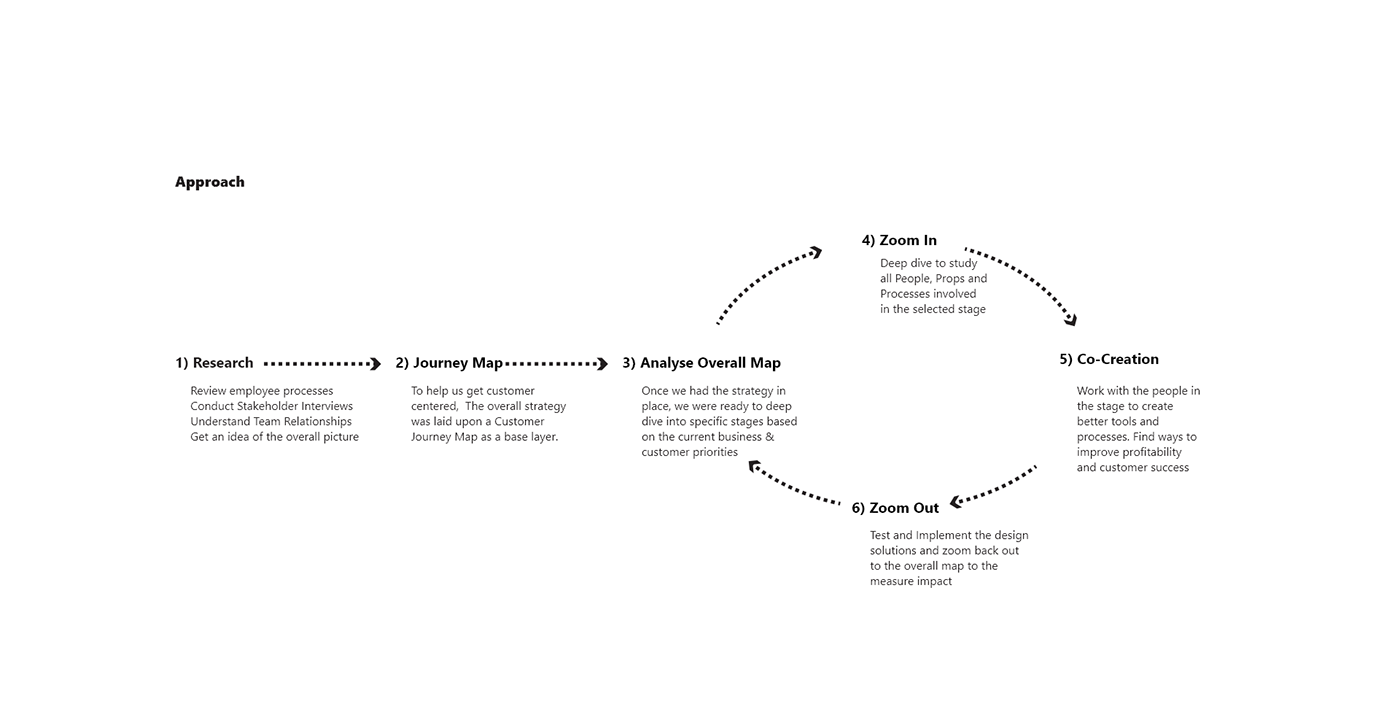
Workshops & Co-Creation to help create the Customer Journey Map
We held a series of stakeholder interviews, co-creation workshops and brainstorming sessions.
The plan was to gather all the information regarding the real estate cycle and use affinity mapping to group them into different customer stages.
Throughout these interactions, we created the overall customer journey map with front end and back end activities.





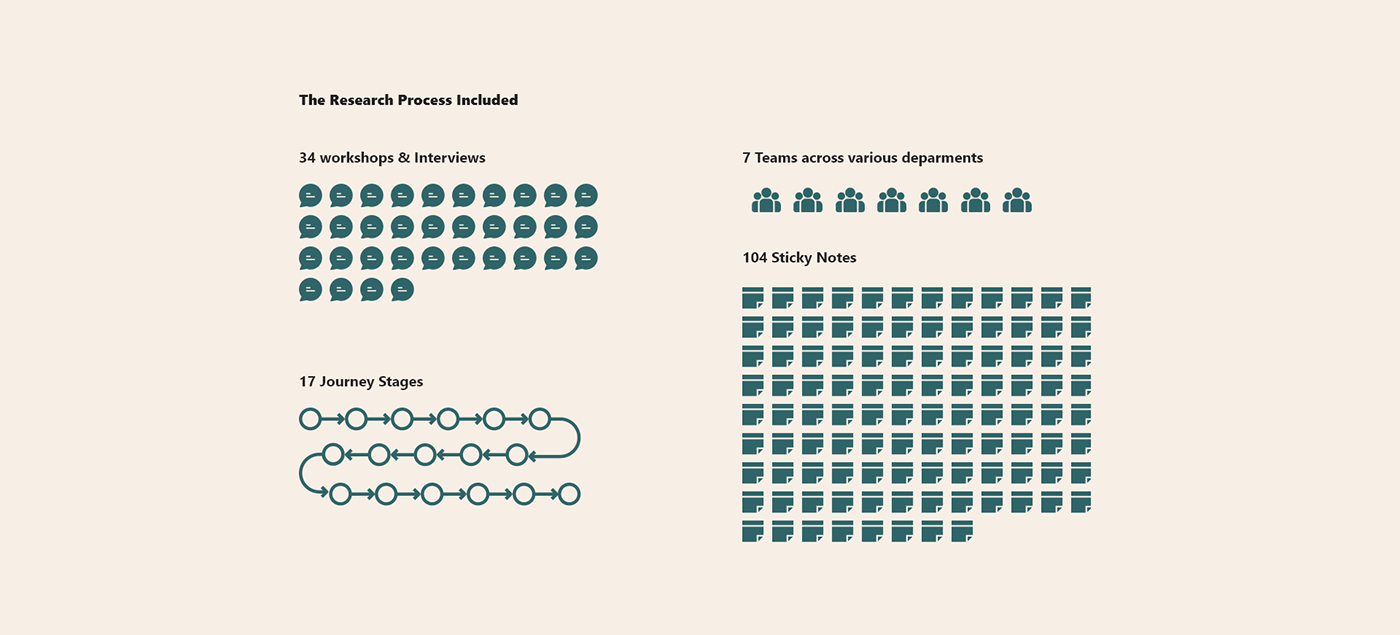
The 6 Stages of the Customer Journey Map
The customer journey map was divided into 6 stages that covered the entire 4 years of the typical real estate journey. It starts from the customer seeing an ad of the project and goes all the way to them moving in and taking over the community. Each stage has it's own color and is named based on the key activity that takes place there.

Understanding the Customer's Journey & the Service Journey
Once we had an understanding of the customer journey,
we detailed it furture to include all the backend activities, teams and touchpoints to create the service journey
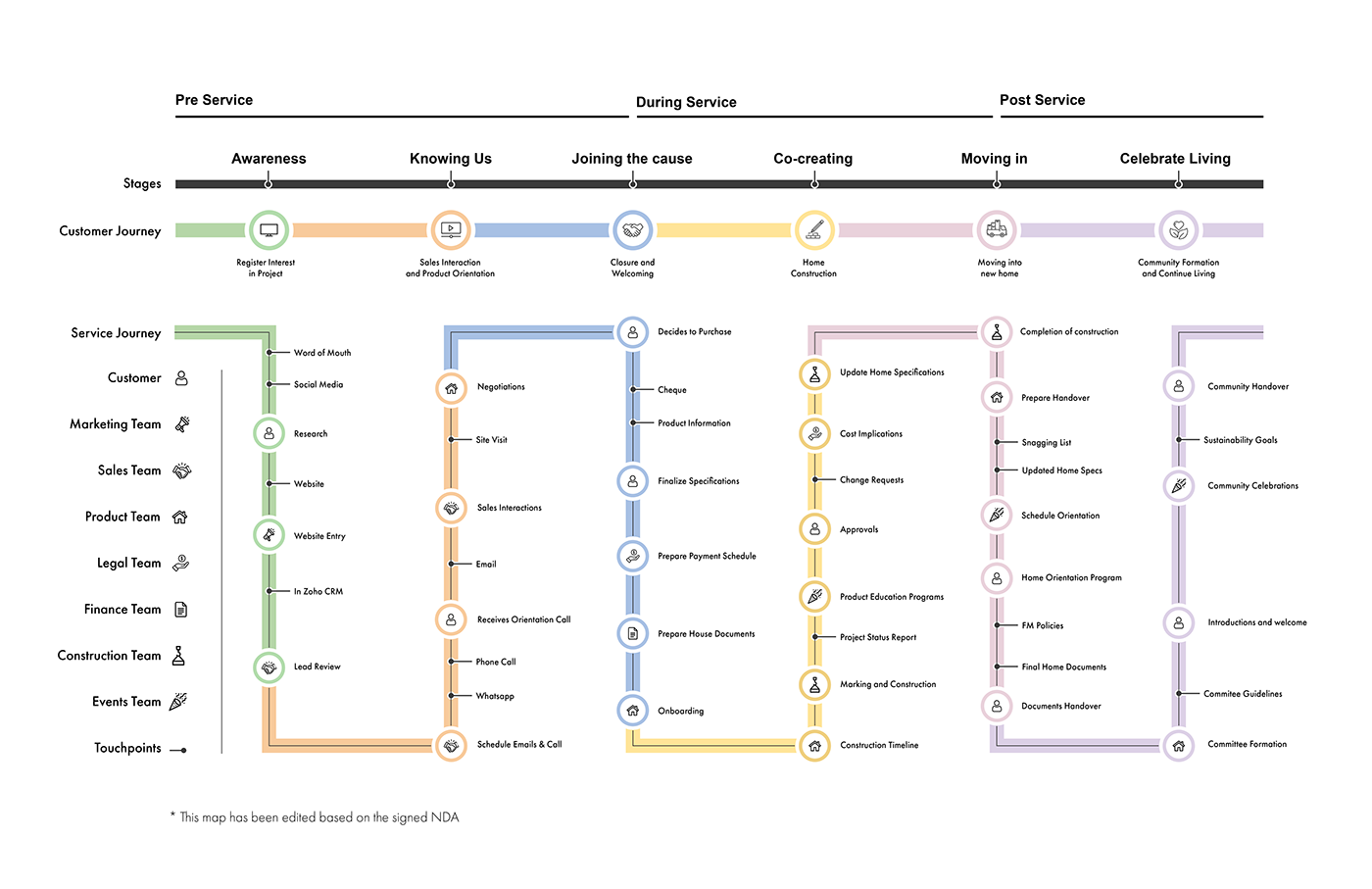
Adding more layers to the Customer Journey Map
To help align employee priorities and give them a better context of what was going on from the business end and the customer's end, we introduced 3 additional layers (or lanes) to the customer journey.

A Customer Journey Orientation Workshop to get Employee Buy In.
Until now, all the employees were only invovled in their particular stage and processes, everyone had only seen bits and pieces of the overall journey map and had very little idea of what was going on from the big picture perspective.
We then held a Customer Journey Orientation Workshop for the all the team heads to help everyone align and understand what was going on.
The Orientation was to help get their buy-in and get ready for the co-creation part once we were ready to deep dive into their processes and tools.

Starting with a Presentation Covering the Basics
The Orientation started with a Presentation covering all the terms, theory, efforts done by theam and Q&A Sessions to help everyone understand what customer journey is about and what it meant for them.

Walking the team though the compiled Customer Journey Map
Once they were upto speed with what was going on, it was time to take them through the customer journey map and help them understand -
• The entire 6 stages of the customer journey map.
• All the activities, processes and touchpoints in each stage.
• The team's roles and responsibilities and how they related to the customer.
• The Value Take Away, Emotional Touchpoints and Underlying Doubts in each stage.
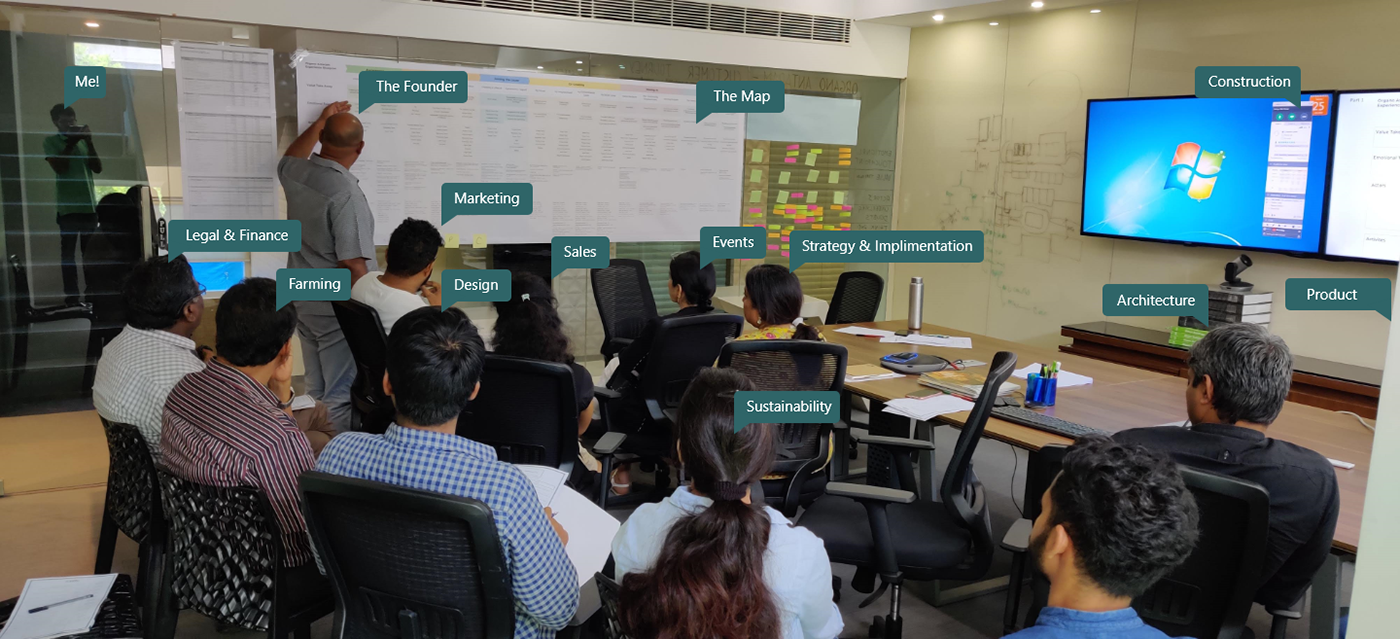
Signing a 'Pledge' to our Purpose Statement
To help everyone feel like they're a part one integrated service and aligned to a common goal,
We had them pledge together to the company's purpose statement.


Ending the Workshop with an Example to Remember
The overall workshop was very well planned with nothing missing out and that wasn't a coincidence.
Towards the end, we revealed that the orientation workshop was a result of a customer journey map we created considering the workshop atendees as our customer and the workshop as the overall journey.
We highligted how it simplified the overall planning for it, and made it easy to create something that was enjoyable both for the organizers (us) and the attendees (them).

Going a step further with a Customer Experience Guidebook for all Employees
To make sure employees remember everything that went into the workshop and the overall customer journey map, we made a go-to guidebook that covered everything from the orientation with more detail for them to go through later.
This would also help future employees / service designers get on board with the entire customer journey mapping exercise.

Deep dive into each stage to Co-Create
The next step was to deep dived into each of the stages of the customer journey and shifted to an agile work methodolgy, changing our internal processes, adding new tools, redesiging existing touchpoints, creating guides for the employees.
There were a series of tasks that were done across all the stages, these tasks spanned across various types of work including servce design, systems design, process design, experience design, graphic design etc.
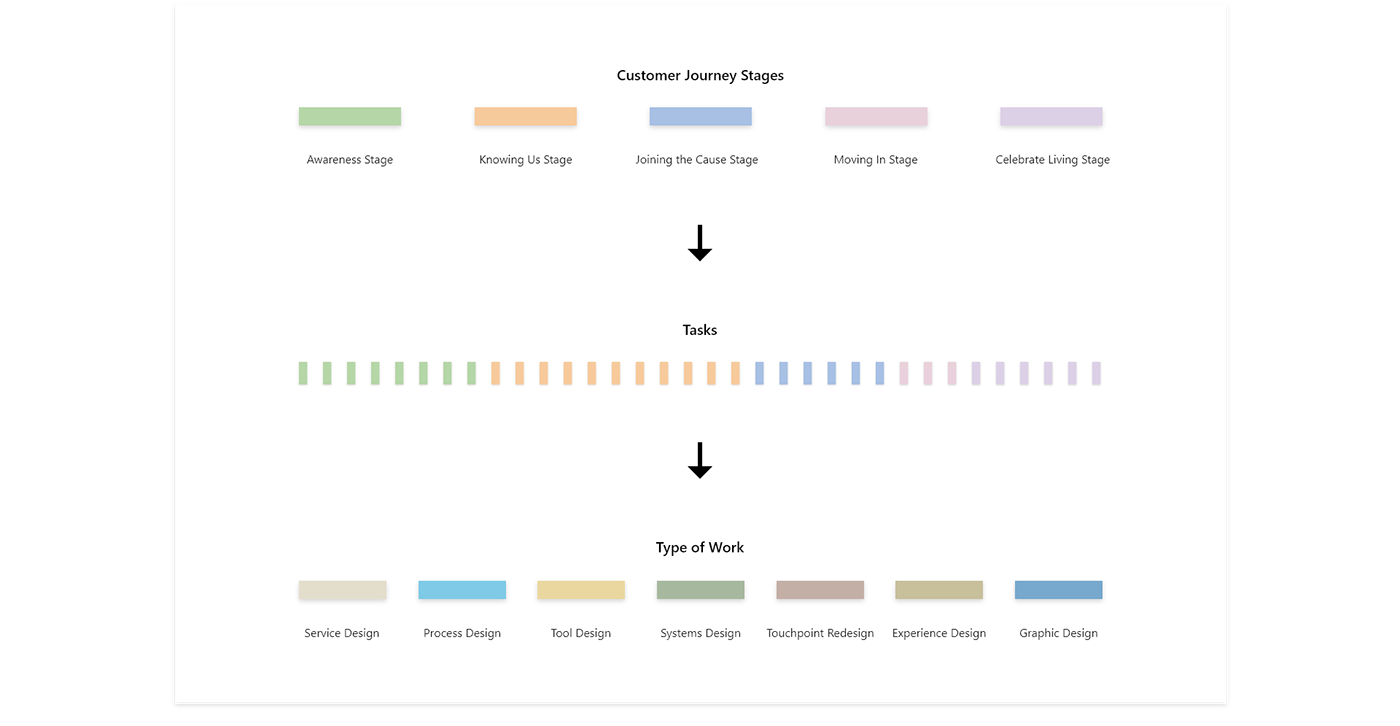
A Sankey Diagram representing their relationship
The sankey diagram highlights all the tasks that were done, the customer journey stage it was a part of and the type of work involved in it.

------------------------- Part 1 Ends Here -------------------------
The rest of the case study continues as individual case study parts.
To avoid making this case study any longer. I've divided it into 6 parts, this is part 1, each of the other parts are a deep dive of a perticular stage of the customer journey map, going deeper into each of their respective tasks, the processes involved and the impact they created.
Case study part 1 - Overview & The Customer Journey
Case study part 4 - Deep dive into the Joining the Cause Stage (coming soon)
Case study part 5 - Deep dive into the Moving In Stage (coming soon)
Case study part 6 - Deep dive into the Celebrate Living Stage (coming soon)
My Take Aways / Learnings
• The hardest part is not coming up with the idea, it's to help it survive through Implementation.
• You can't just re-design someone's process and expect them to follow it.
• Always start simple, small and then use the momentum to get through bigger tasks.
• Call your design implementations as 'Experiments' to lower the fear of failure.
• Explore solutions outside just digital touchpoints.
• Remember that you're designing for people.
• You can't just re-design someone's process and expect them to follow it.
• Always start simple, small and then use the momentum to get through bigger tasks.
• Call your design implementations as 'Experiments' to lower the fear of failure.
• Explore solutions outside just digital touchpoints.
• Remember that you're designing for people.
Credits
• Isometric Illustrations from Manypixels
• Overall visualization Inspired by - Ana Soto, Fountain Studio, Accurat Studio and Pentagram
• Overall visualization Inspired by - Ana Soto, Fountain Studio, Accurat Studio and Pentagram
Thank You
Before you leave, I'd love to hear your thoughts about the case study.
Please feel free to leave a comment😀

I'm Shubham Agarwal, a service designer based out of Hyderabad, India.






